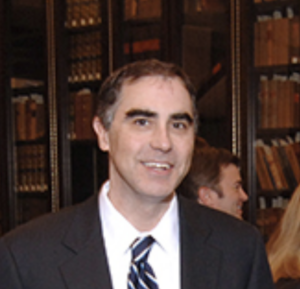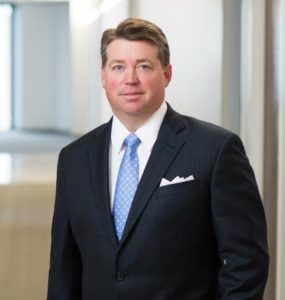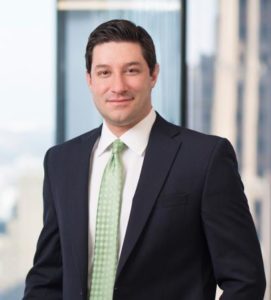Eleven years ago, Baker Hughes hired innovation firm PCDworks to design a linear, motor-based safety valve to be used downhole in oil and gas wells. Engineer Dr. Kenneth Wilson, PCDworks’ director of material sciences at the time, developed the technology.
But when Baker Hughes patented the technology in 2012, Dr. Wilson refused to assign his rights to the Houston-based energy company, alleging he personally owned the technology, not PCDworks. Though PCDworks had company policies that would have negated Wilson’s claim, he refused to sign that particular contract.
He sued Baker Hughes in Harris County District Court once he left PCDworks. And because PCDworks is likely not the only contractor Baker Hughes has worked with to develop patented technology, Dr. Wilson’s lawsuit threatened to set a perilous precedent if he had won.

But he didn’t, thanks to the work of Baker Hughes in-house patent lawyer Anthony Matheny and its outside law firm, Bracewell. Their teamwork on this case has landed them as one of the finalists for the 2019 Houston Corporate Counsel Awards’ Business Litigation of the Year.
Matheny and Bracewell, as well as the other finalists, will be honored April 25 at a ceremony jointly hosted by the Houston chapter of the Association for Corporate Counsel and The Texas Lawbook.
Matheny worked on the case with Houston Bracewell partner Richard Whiteley and associate Tim Geiger.
Born and raised in Houston, there were no other lawyers in Matheny’s family. His dad was a pharmacist and then ran his own oil and gas wire line service company until 2010. Matheny’s mother stayed at home with him and his older brother until he was in high school and then worked as an insurance agent.
Matheny attended college at Texas A&M University, where majored in biology and minored in chemistry. He worked for a couple years as a lab researcher at the University of Texas Health Science Center in San Antonio, but funding cuts forced him to contemplate his next move.
He didn’t consider law school until a professor at the lab asked him if he had considered patent law. Once he learned more, Matheny became set on becoming a patent lawyer. He withdrew from the MBA night program he had begun, moved back to Houston and enrolled in classes at the University of Houston Law Center.

Another formative moment came when he got involved in moot court during law school, which exposed him to the litigation side of patent law. He was chosen to participate in the Saul Lefkowitz Moot Court Competition, an annual event centered on trademark and unfair competition law. Matheny and his moot court partner won the best brief and best oral argument awards.
“It started clicking that there was maybe more to patent law than writing patent applications,” Matheny said. “It got me excited about the litigation side of things and being able to help people through litigation. I realized I could do it, and I enjoyed it.”
At Baker Hughes, Matheny’s position was legal counsel in the licensing & dispute resolution in the company’s products and technology department.
(Matheny left Baker Hughes in September to start his own law and consulting firm.)

One of Baker Hughes’ biggest challenges of the February 2018 trial against Dr. Wilson was to thwart any chance of a David-versus-Goliath dynamic. Whiteley said he was very careful to not cross-examine Dr. Wilson the way he would typically question a corporate representative opponent.
“Sympathies normally lie with the individual … you have to be really careful and think about how you’re going to make your points without being disrespectful and just a big giant trying to squash a bug,” Whiteley said.
After the verdict, a couple of the jurors thanked the Baker Hughes team for being respectful and professional toward the individual inventor.
Baker Hughes never argued that the invention was not important or that the inventor did not come up with it, Whiteley said, and that approach was key to them winning the case.
“We never tried to take shots at his own background or that he wasn’t qualified,” he said. “We gave him all the credit he was due, but at the same time, we pointed out we were paying him to do this, that we believed the patent was ours and that the jury should award us ownership of the patent.”
“We thought his invention was good enough to spend money to get a patent on it,” Matheny added. “We didn’t run away from those facts, we embraced them.”
Bracewell became outside counsel for the case due to its longstanding history of representing Baker Hughes, which has been a firm client since 1990. Whiteley inherited the case after the original lead partner left the firm.
Whiteley and Matheny had met before since Matheny also practiced at Bracewell earlier in his career. But this was the first time for them to work closely together. It was also the first time for Matheny to go to trial with Geiger, a Bracewell senior associate who handled Baker Hughes’ opening statement and questioned some of the witnesses.
“They were very open to our ideas. Even sometimes when I had crazy ideas, they were open to them and discussing them,” Matheny said. “Like good trial lawyers, they would incorporate [our feedback] when it was appropriate and disregard when appropriate.”
Whiteley said Matheny was “really supportive during trial” and “really involved” – in some ways, more involved than he had ever seen a client get. Whiteley said Matheny played large roles in jury selection, witness preparation, developing themes for opening statements and closing arguments, and advising the court on the patent process.
Matheny also conceived of the idea to pursue a claim under the “hired to invent” doctrine, which requested that Dr. Wilson pay Baker Hughes’ fees – including attorneys’ fees – associated with prosecuting and obtaining the patent should the court rule against Baker Hughes on the patent ownership issue.
Though it wasn’t a claim Baker Hughes ended up having to pursue, “it helped convey the message to the jury that we were really serious and felt strongly about our case,” Whiteley said.
What ultimately helped Baker Hughes win the case, Whiteley said, was evidence presented that Dr. Wilson did not immediately claim the invention as his own and that he waited until leaving PCDWorks to do so.
The Baker Hughes team also showed jurors PCDWorks’ offer letter to Dr. Wilson, which proved he was hired to invent. This was important because Dr. Wilson claimed the invention was his, not the company’s, because he came up with the invention at home, off the clock. Dr. Wilson’s argument would have been stronger if he was not a non-inventor employee, Whiteley said, but the offer letter helped prove that Dr. Wilson’s argument didn’t apply.
